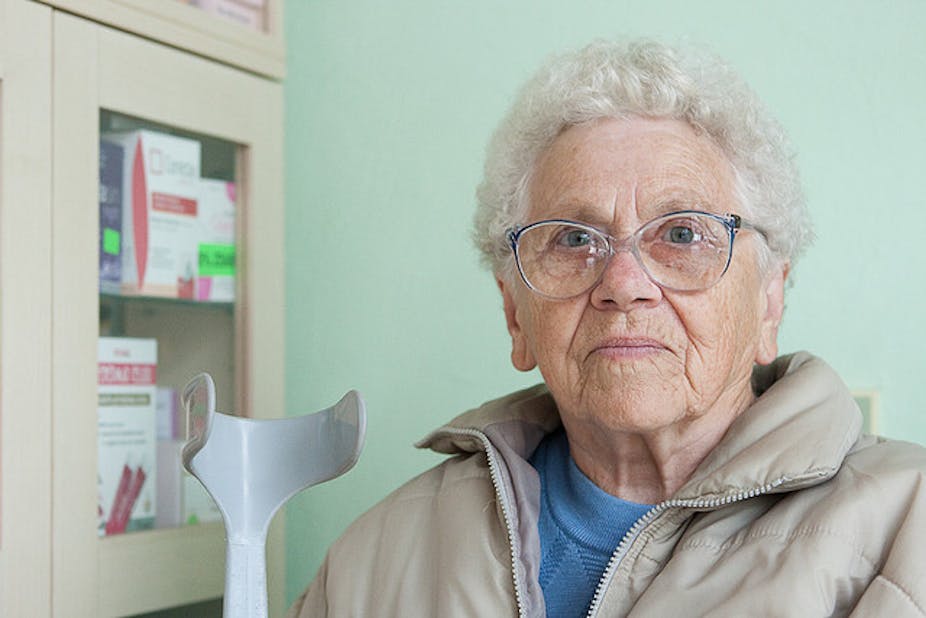The earthquake in the Northern Italian town of Medolla this May devastated the local community, killing 17 people and leaving 14,000 homeless. Because Medolla is the manufacturing epicentre of the Italian biomedical industry, the impact of the earthquake also spread around the globe, after 80 out of the 90 factories in the area were damaged.
Australia’s health-care industry is uniquely vulnerable to such supply chain interruption. We depend on continuous supply of a broad range of pharmaceuticals and devices, most of which are manufactured beyond our shores – some of which came only from Medolla. And we have almost no home-grown industrial capacity to fill any gaps.
It’s not just an earthquake in Italy or a flood in India that could interrupt supply. Greece’s health system was on par with ours just five years ago. But due to the country’s economic woes, more than 500 basic medicines, including paracetamol, insulin and simple antibiotics are in short supply.
Global business
High-quality medicines are a global commodity. And with ongoing expectations that high-quality cheap generic medicines will become even cheaper, manufacturing diversity continues to shrink.
Take paracetamol, for example. The raw ingredients come from underground mines in South Africa and Russia, from by-products of crude oil drilled from ocean beds around the world, and from organic compounds that are manufactured in only a few factories worldwide.
These ingredients need to be brought together before they undergo sophisticated sterile chemical engineering. Then they need to be pressed into tablets, packed into sealed containers and shipped to where they are consumed. And at the very end of all of this, people must have enough money to buy them.
Our expectations for high-quality medicines reflect the strength of the international medical manufacturing and trade industry, and organisations such as the World Health Organization (WHO), the US Food and Drug Administration (FDA), and here in Australia, the Therapeutic Goods Administration (TGA), which monitor and police the quality of the entire chain.
The WHO has a set of Good Manufacturing Practice (GMP) guidelines that must be followed if a manufacturer is to legitimately enter the market. But the system isn’t perfect.
There is no protection from financial catastrophe. Nor do the GMP guidelines mention the environmental stability of the chosen site for a manufacturing plant. A corporation can build an antibiotics factory on a floodplain in India, or dialysis-related hardware plant in an earthquake zone in Northern Italy that has experienced over 3,000 quakes in the last decade.

Local vulnerabilities
Despite these real vulnerabilities, Australia is failing to invest in basic local capacity to produce pharmaceuticals and devices, and instead focuses on high-tech “innovation”.
Almost every large hospital in Australia, for instance, has decided that the economics of sterilising re-usable equipment no longer competes with using mass-produced disposable surgical implements. Hospitals benefit both from reduced dollar costs and also have the advantage of freeing up valuable space that the sterilisation units once required.
These changes do not come for free. A decision to close an in-hospital sterilisation plant results in complete dependence on a mega-factory somewhere to our north to continue the supply of these minimally profitable items. If a factory is damaged or there is international instability and supply stops, Australian hospital operating theatres will be severely compromised.
From a national perspective, there are also increasing economic forces pushing industry to disinvest in local manufacturing and move facilities offshore, particularly companies involved in making cheap off-patent drugs.
Recent changes to the PBS price structure, which protect high prices for patented drugs but force generics to become even cheaper, has already carried away local manufacturing of some essential medicines which are already in short supply in Australia.
Building capacity
None of these vulnerabilities are historically unrecognised. Australia has a solid and internationally envied record of investing in health-care resilience.
Pharmaceutical company CSL was established by the Commonwealth government in 1916 with the explicit purpose of servicing the health needs of a nation isolated by war.
The Pharmaceutical Benefits Scheme was conceived shortly after World War II to ensure supply of 140 essential medicines to the Australian population.
More recently, in 2000, the National Medicines Policy outlined similar sentiments in one of its four key pillars – “to ensure a viable medicines industry”. The policy explicitly states that “a locally based industry maximises the opportunities for reliable and cost-effective supply of medicines in Australia”.
But the exodus of core industrial and technical capacity continues full throttle, or perhaps it’s now slowing down because there’s not much left to move offshore. As a result, our health-care system increasingly relies on imports that arrive on a just-in-time schedule with no reserves and virtually no local industrial capacity.
Self-sufficiency is a fanciful pipe dream in such a complex global industry as pharmaceutical manufacturing. We consider more than 750 medicines listed by the PBS as “essential” but it would be impossible for an Australian industry to make all of these from scratch.
Rather, we need to develop resilience in the supply of the most essential life-saving health-care products. If there was a global crisis such as regional default in debt, a natural disaster or a large-scale conflict, it would be comforting to know Australia had the capacity to continue manufacturing the 50 most effective life-saving drugs.

